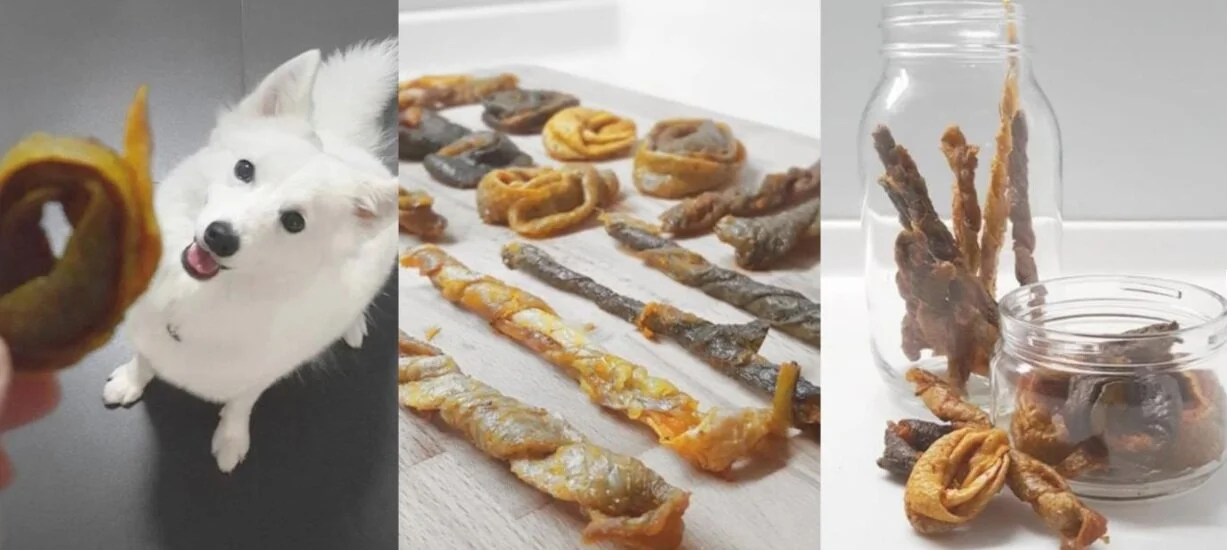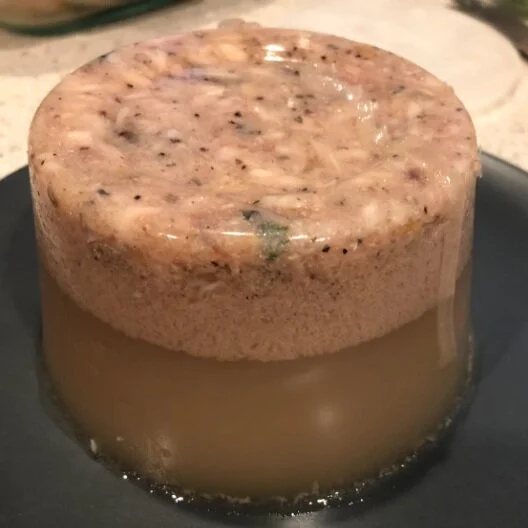Changing Attitudes Towards Fish For Our Pets
Gold spotted bass heads cooked to make a concentrated stock and prepare fish aspic. Photo by Kimberly Coelho.
Pet food preparation at home is on the rise in response to growing concerns about transparency and quality of processed pet food. The number one priority of “pet parents” is the health of their pets, and we know there is a growing community of pet owners who are looking for alternatives to dry or canned pet food.
“By purchasing and combining the ingredients yourself, you know exactly what is going into the meal. Also, if your pet has specific protein intolerances, requires a special diet for a disease or condition or needs a low-fat diet, you can control the meals to address the issues at hand,” says Dr. Judy Morgan, DVM and author of Yin & Yang Nutrition for Dogs [1].
Fish is widely known for its health benefits for humans, and it provides many of the same benefits for our animals. Fish is a great natural source of long-chain omega-3 fatty acids, beneficial proteins, amino acids and Vitamin D for people, dogs, and cats alike. And cats aren't the only ones that love fish. Dogs are known to love their dog fish treats. “Fish skin can be a valuable source of collagen, which is especially important for the bone and skin health of senior dogs” [2].
Turmeric fish skin roll-ups. Photo by Spottedbyhumphrey.com.
An Australian company, Fishtastic Dog Treats, has been successfully producing fish treats for dogs from fish parts that would otherwise go to waste [3]. Fish cartilage, mackerel tails, and fish skins are simply dehydrated without adding any preservatives or additives.
As it turns out, you can approximate these treats in your kitchen, using an oven or home dehydrator. Ask your fishmonger to save fish carcasses or skins to make your own dehydrated pet treats at home (recipe coming soon). And don't hesitate to experiment - your pets will thank you for it!
Here in the United States, single-ingredient packaged fish skin treats are made from four main species: cod, wolf fish, salmon and redfish (ocean perch). But you can use skins and tidbits like fins, tails, and scrap meat, from any species of fish available to you.
The texture and flavor vary among these, but ultimately the end result is a tasty, crunchy treat for your pet. If you have local, sustainable sources available to you, you can simultaneously reward your pets and support a sustainable, low-waste seafood system by making your purchases conscientiously.
There’s also the option of going one step further and preparing more robust meals for your dog or cat, rather than purely supplemental treats. A benefit of preparing your own pet food is avoiding the high cost of “premium” fresh or organic pet food. Follow this link to learn my methods for making your own fish aspic, a gourmet-style meal for a beloved pet.
Aspic is a savory jelly derived from collagen-rich stock, and was once the height of culinary fashion in France. Enthusiasm for the use of aspic in human recipes has waned, but you can bet that anything this protein-rich meal will appeal to canine and feline taste buds!
The elegance of your aspic dish might be lost on your canine or feline dinner guest, but you sure will have fun making this classic and creative dish.
Since the Middle Ages, aspic was prepared as a way to extract all the protein from bones. It was a savory jelly that made a nice table presentation, but also preserved meats encased inside it and maximized the nutritional value of bones.
Sources
[1] Dr. Judy Morgan, holistic veterinarian and author of Yin & Yang Nutrition for Dogs: Maximizing Health with Whole Foods, Not Drugs. November 30, 2017.
[2] Leslie Gillette, DVM, Can dogs eat fish?, petmd.com. June 30, 2020.
[3] www.fishtasticdogtreats.com.




